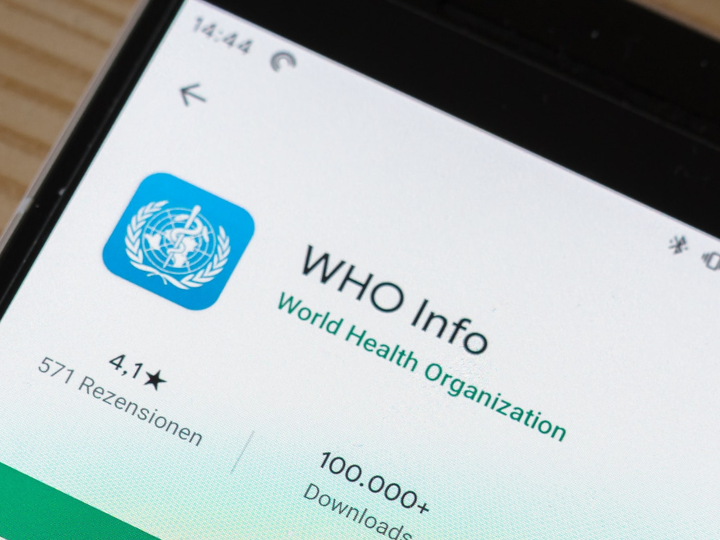by Amalie Holmgaard Mersh
With a proposal for a negotiating text for a pandemic treaty finally on the table, the work towards a global accord on pandemic prevention, preparedness and response is slowly progressing.
The proposal was circulated to World Health Organisation (WHO) member states and non-state actors on Monday (16 October). The text will not be publicly available until 30 October, but was seen by Euractiv.
At the next Intergovernmental Negotiating Body (INB) meetings on 6-10 November and 4-6 December, the 194 WHO member states will vote to accept or reject the proposal. If approved, the text will be the foundation for the tough negotiations ahead.
The INB was set up in 2021 to draft and negotiate a new WHO instrument for pandemic preparedness. Before this proposal, three different draft texts by the so-called INB Bureau were the basis of the discussions.
Until now talks about the pandemic treaty have been mainly informal and behind closed doors.
These informal talks were necessary as “the trust has been broken” between countries during the COVID-19 pandemic, where many developing countries never got sufficient access to the vaccines and medical equipment needed to protect their people, Fernando Perez-Canado, adviser on the external dimension of health to Sandra Gallina, the head of the EU Commission’s DG SANTE, said at the World Health Summit in Berlin this week.
The proposal itself
Access and benefit sharing and the transfer of technology are key sensitive elements of the 29-page proposal text.
The latter includes intellectual property (IP) matters, a lightning rod issue that caused fierce debate leading up to the June 2022 decision on a five-year waiver of the World Trade Organisation (WTO) agreement on Trade-related aspects of Intellectual Property Rights (TRIPS) on COVID-19 vaccines.
On access and benefit sharing, the proposal suggests the establishment of a multilateral system – a “WHO Pathogen Access and Benefit-Sharing System (WHO PABS System)” – also mentioned in a previous draft text. The goal of such a system is to make sure data about new pathogens are shared while ensuring equitable access to the benefits – the medical countermeasures.
However, it has also kept a suggestion that in the event of a pandemic 20% of the production of pandemic-related products will be donated to the WHO to distribute where they are most needed. This has previously been dismissed as insufficient by civil society organisations.\
Still a long way to go
While the proposal is still being examined by all parties, the initial impression of Piotr Kolczynski, EU health expert at the anti-poverty NGO Oxfam, is mixed.
“In general, it is quite positive. What is positive is that there are many equity provisions included in the text. We were afraid that many things would be left out,” Kolczynski told Euractiv.
On the other hand, he believes that the proposal is not “revolutionary”.
“The problem is that the language is really weak. It is, in our opinion, inadequate,” he continued.
While Kolczynski said it was worth moving forward with the text, the International Federation of Pharmaceutical Manufacturers and Associations (IFPMA) issued a statement describing the text as “damaging” and that it “would take us in the wrong direction”. Their biggest concern is the inclusion of IP waivers in the proposal.
“The ability of the private sector to develop new vaccines and treatments in response to COVID-19 was driven by decades of R&D investment, supported by the intellectual property framework, and the ability of scientists to rapidly access data on pathogens,” said IFPMA director general Thomas Cueni.
“If adopted, the draft treaty would undermine both and leave us weaker ahead of the next pandemic than we were in December 2019, and we urge governments to make significant revisions to the current text,” Cueni added.
Weak language harms commitment
For significant changes in the global health approach in the case of a future pandemic, clear commitments would need to be made in the text.
As it stands, article 11 on “transfer of technology and know-how” uses phrases such as “commit to agree upon” and “encourage”. In the next article on “access and benefit-sharing”, after suggesting a multilateral system for access and benefit-sharing, it says that parties “shall consider additional benefit-sharing options”.
Kolczynski said he hopes that member states will accept the text, since a rejection would prolong the process and make the deadline in May 2024 “virtually impossible” to make.
“We hope that at the INB7, countries will decide to start negotiating on this text. But during the negotiations, the language should be strengthened so the objectives, which are in these provisions, can be realistically achieved,” he said.
Key achievements to unlock
However, clear disagreements remain and the negotiations are set to be difficult.
During the Berlin health summit, Steven Solomon, principal legal officer at the WHO, pointed to four areas that are crucial to finding common ground in order to get “an instrument that will truly operationalise equity”.
He highlighted a “meaningful” pathogen access and benefit-sharing system, a more sustainable and distributed global production capacity, strengthening national health capacities, as well as governance, financing and political will.
Despite the many informal discussions about the pandemic accord, the summit demonstrated that consensus on topics like technology transfer remains a long way away.
While Perez-Canado repeated the EU stance of supporting voluntary technology transfer, Maria Juliana Tenorio Quintero, minister counsellor at the Permanent Mission of Colombia before the UN, emphasised that it was very clear that voluntary measures were not enough in the heat of a health crisis.
*first published in: Euractiv.com




 By: N. Peter Kramer
By: N. Peter Kramer
